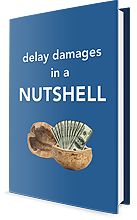Weather And Construction: What You Need To Know
The following article starts our series focused on the questions and scenarios that stakeholders need to consider when dealing with weather in construction contract documents and project schedules.
Wrestling in the Mud or Dancing in the Rain: Planning for Mother Nature
At one time or another in our construction careers, many of us have worked on projects where some “troublemaker” just did whatever they wanted to do, regardless of the effect that their actions had on our work. In some of those instances, it seemed that no matter how well we documented the issues, at the end of the day, we had a hard time coming up with an exact method to calculate how much of a problem the “troublemaker” caused. Mother Nature often acts as just such a troublemaker and is quite capable of creating chaos on a construction project. She can induce havoc on the project schedule and often is the catalyst for significant disputes between owners and contractors.
Since I started work as a construction management consultant many years ago, there have been few projects that have crossed my desk that didn’t, to some extent, attempt to explain and measure the role Mother Nature played in a project finishing late. Troubled projects often finish with a bucket full of puzzling “delays” or “impacts.” The challenge of sorting out such complex delay claims is often exacerbated by inadequate reasoning for time extension requests coupled with inaccurate calculations of the delays or impacts. Allegations of extensive delays due to weather are frequently part of this puzzle.
A multitude of interpretations of the contract clauses pertaining to weather and time extensions can give rise to a dizzying array of unfounded and inaccurate claims. These varying interpretations are inevitable when a practical definition of “reasonably anticipated” or “normal” weather is not defined in the contract. In addition, parties often fail to review the contract as a whole in order to determine how weather delays should be included in the project schedule and how they should be evaluated during or after the project. It would be good practice for both the owner and contractor to agree on an understanding of all definitions and contract clauses related to weather, time, and the project schedule prior to bid or during contract negotiations. Doing so allows the contractor and owner to properly develop the baseline schedule, provide proper schedule updates, and provide accurate measurements of project delays. Often, this level of detail is not discussed between the parties, which leave the contractor in a position to provide its own interpretations of the contract and plan for calculating the number of “reasonably anticipated” weather delays, inclusion of those days in the project schedule, and evaluation of those days during the project. In turn, the owner may disagree with the contractor’s interpretations of the contract clauses and how it plans to schedule and manage the “reasonably anticipated” weather days.
The purpose of this series of Ideas & Insights is to bring light to some of the questions and scenarios that stakeholders need to consider when dealing with weather in the project schedules, as a result of commonly used contract documents. In addition, this article will provide practical approaches to establishing the amount of “reasonably anticipated” weather as well as ways to incorporate the “norm” in the project schedule and track them during the project.
In order to do so, we must start by discussing the contract. Such a discussion will enable the project’s schedule manager to accurately incorporate the weather information into the project schedule and will allow all parties the ability to understand and track the impact of Mother Nature’s mischief against the contract requirements.
Click here to get our free book on delay damages.

![Boy in the rain [Weather And Construction: What You Need To Know] [Dealing with rain on construction projects.]](https://www.traunerconsulting.com/wp-content/uploads/Boy-in-the-rain-300x199.jpg)
